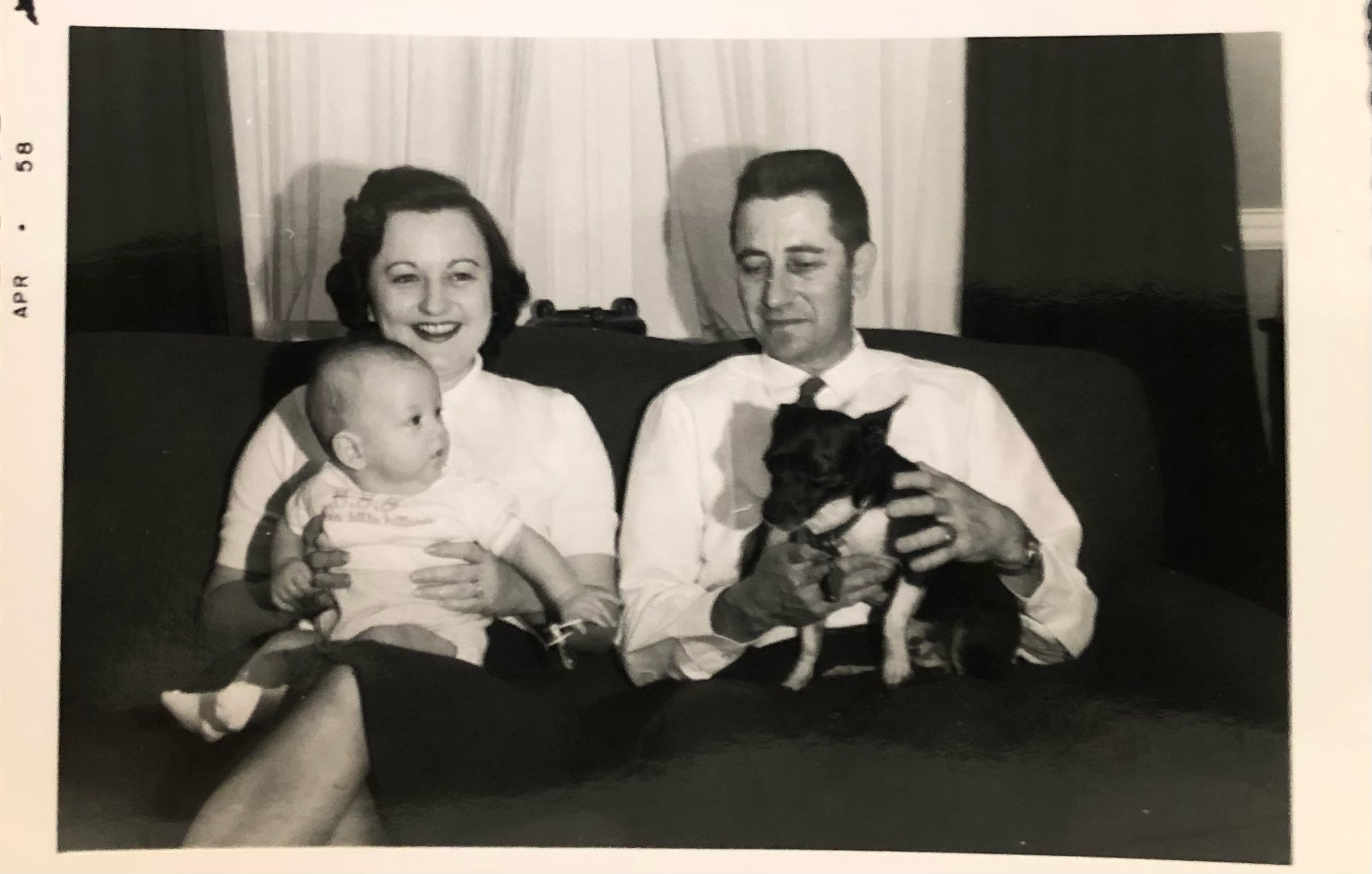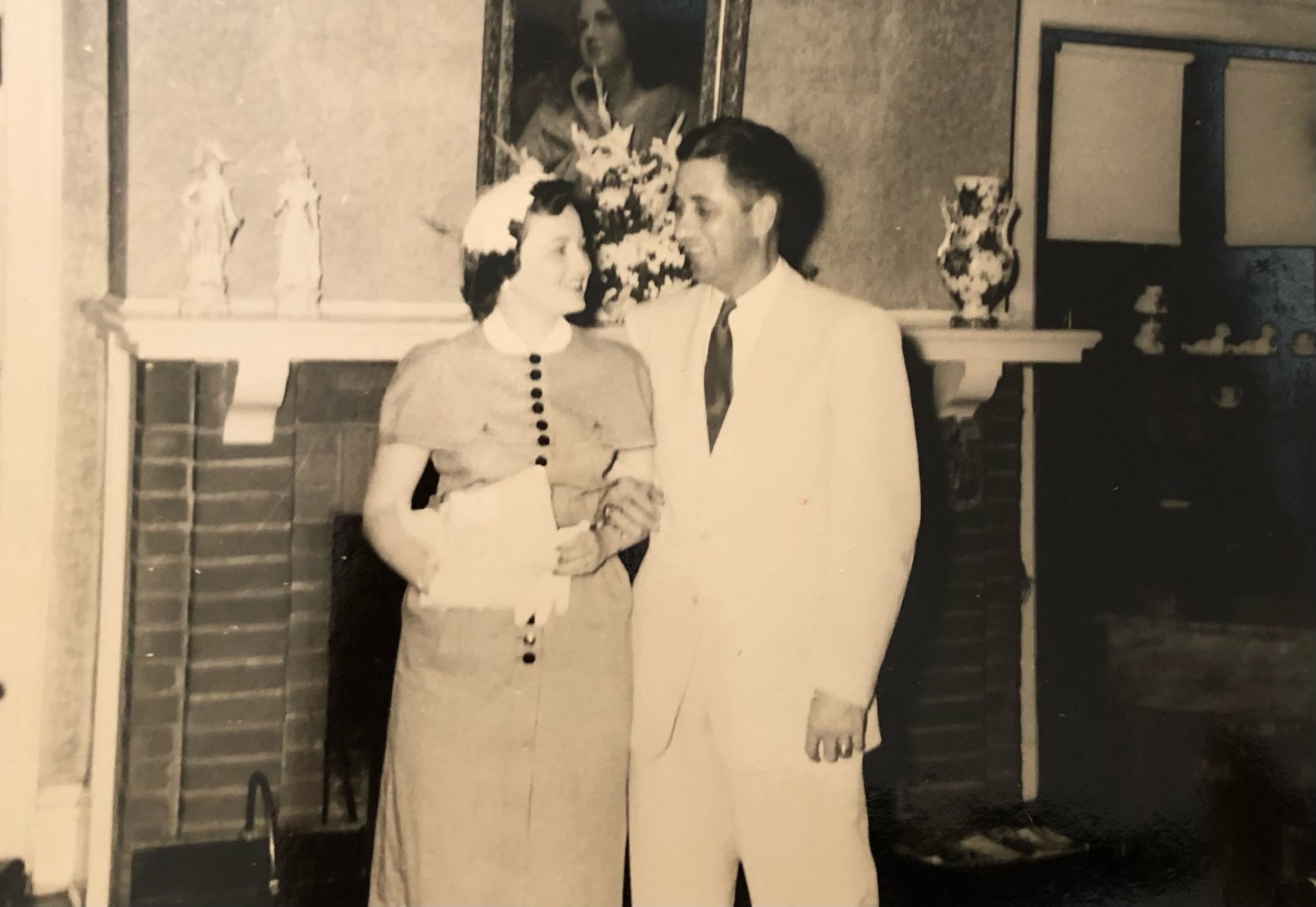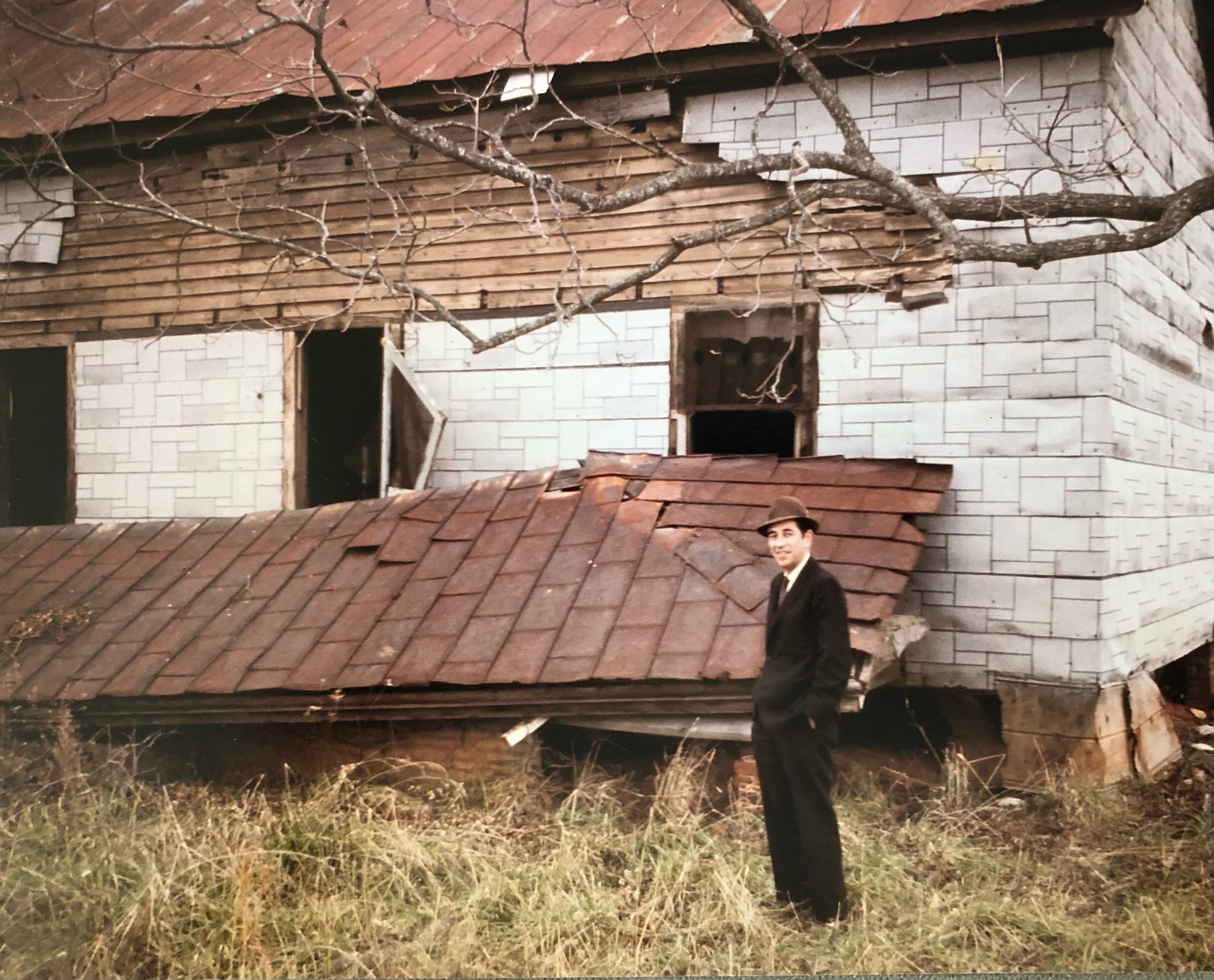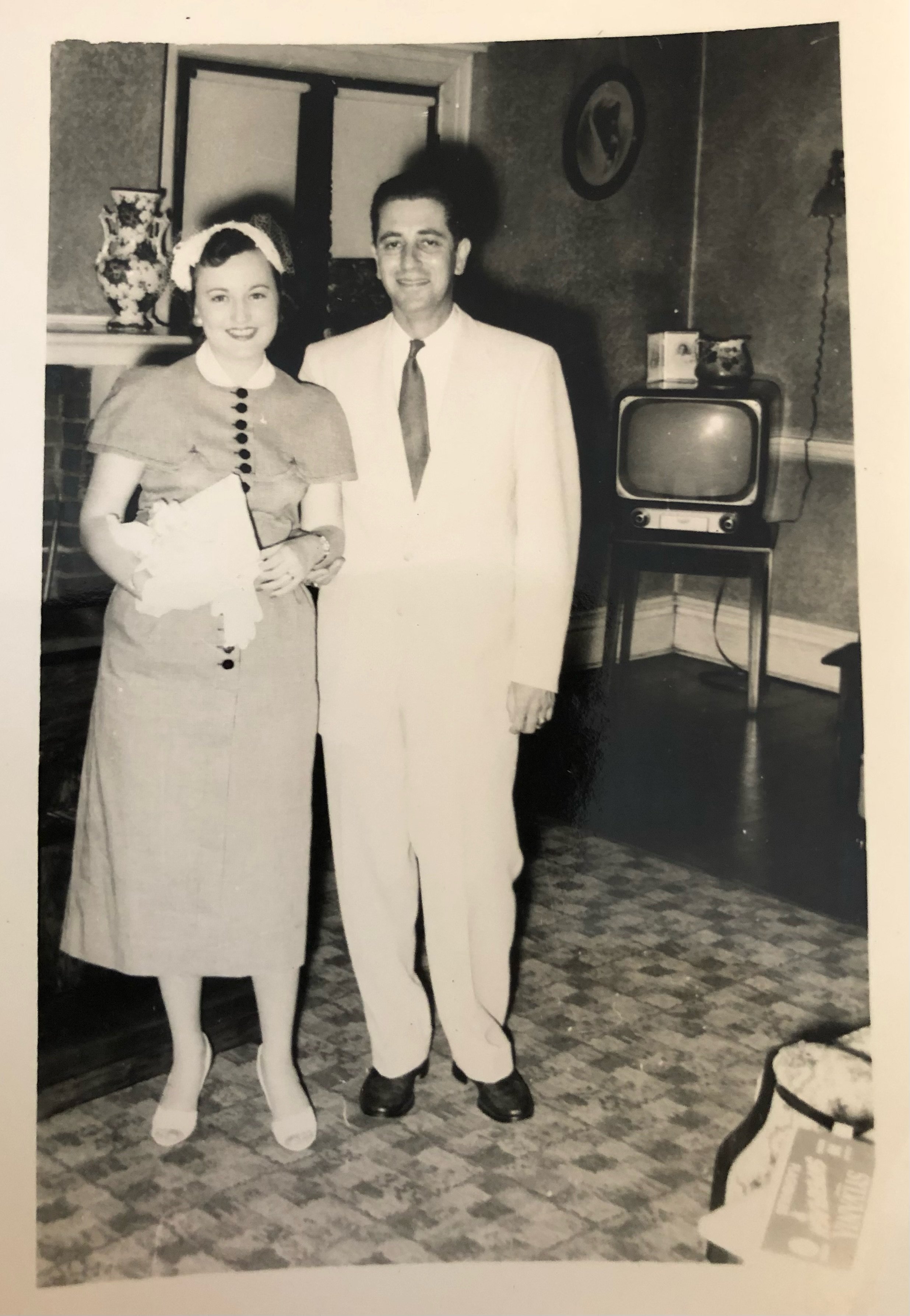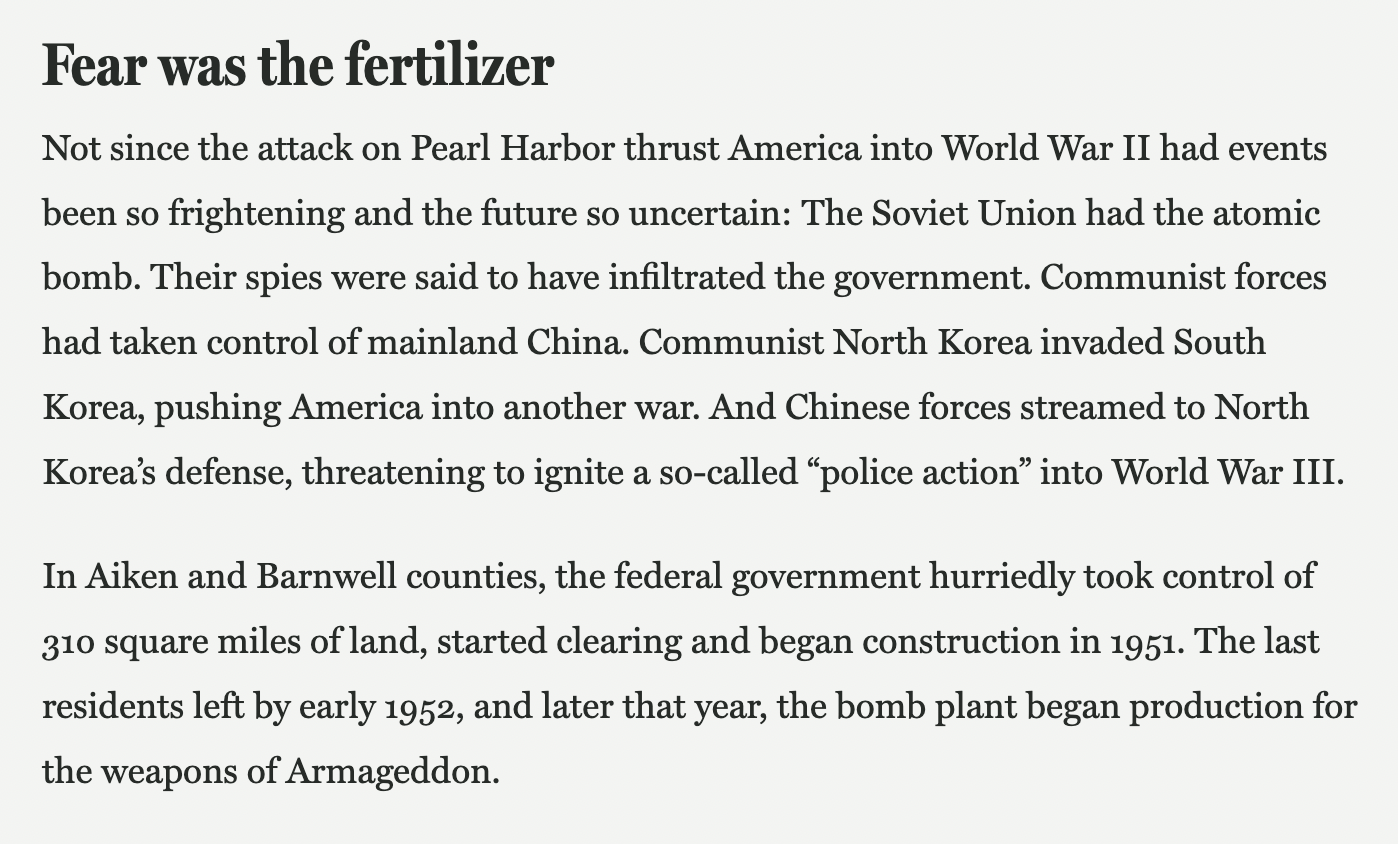the true story
Though ATOMIC FAMILY is a work of fiction, the story is heavily inspired by real events and people. My grandfather—who died in 1976, nearly twenty years before I was born—was a chief agronomist, responsible for disposing nuclear waste at the Savannah River Plant (SRP). At the time, this meant burying irradiated materials in the ground. This also meant his work was top secret: his wife and son knew nothing about his other life. These are just some of the resources that helped me write the novel.
health physics
My grandfather, Henry Horton, was an agronomist working in the Health Physics Department at the Savannah River Plant outside Aiken, South Carolina.
the bomb plant
The Savannah River Plant was very top secret. This was at the height of the Cold War, and the facility would be used to create materials for the hydrogen bomb.
the nuclear graveyard
My grandfather is pictured here with his team as they dispose of nuclear materials at SRP.





